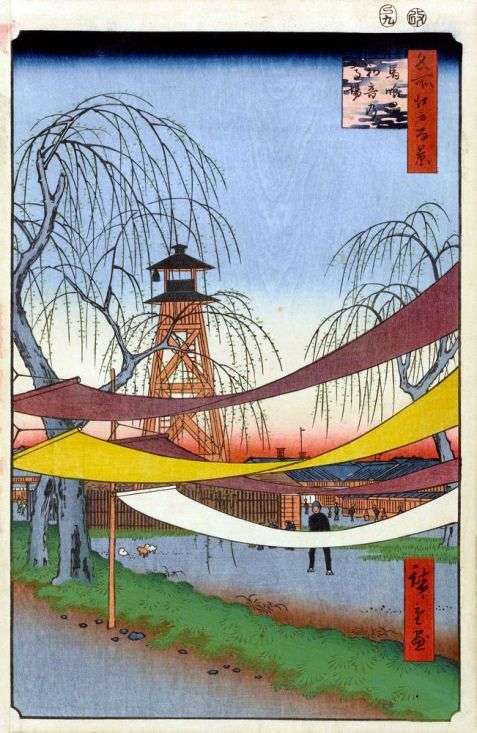
The name “Bakurote” comes from the name of the horse traders – Bakuro and means “Feeding the horses”. Bakurote was the starting point of the Osjukai-do tract. Here was the Hatsune Manege, used by the samurai, who served in the Tokugawa family. The name of the arena – Khatsune – comes from Shinto temple Inari.
In the days of Hiroshige this arena was no longer used for its intended purpose and remained a quiet, abandoned square. Around her were planted willows. The cloth seen in the foreground – tammon – shows that this area was used to dry the cloth, after painting by the master from the neighboring quarter of Konya, famous for its fabric dyers.
In the background – one of the numerous fire towers with a bell, which was called during the fire, alerting people about trouble. The buildings next to the tower are a guesthouse for visitors to Edo. Harmony in the composition is made by the blue sky background and the color of the fabrics. Willow branches with young shoots are detailed. The difference between these two sheets is noticeable immediately. This applies primarily to the colors of the painted fabrics hung for drying. The fire tower in the background is brighter than in the first version, as well as the sunset.
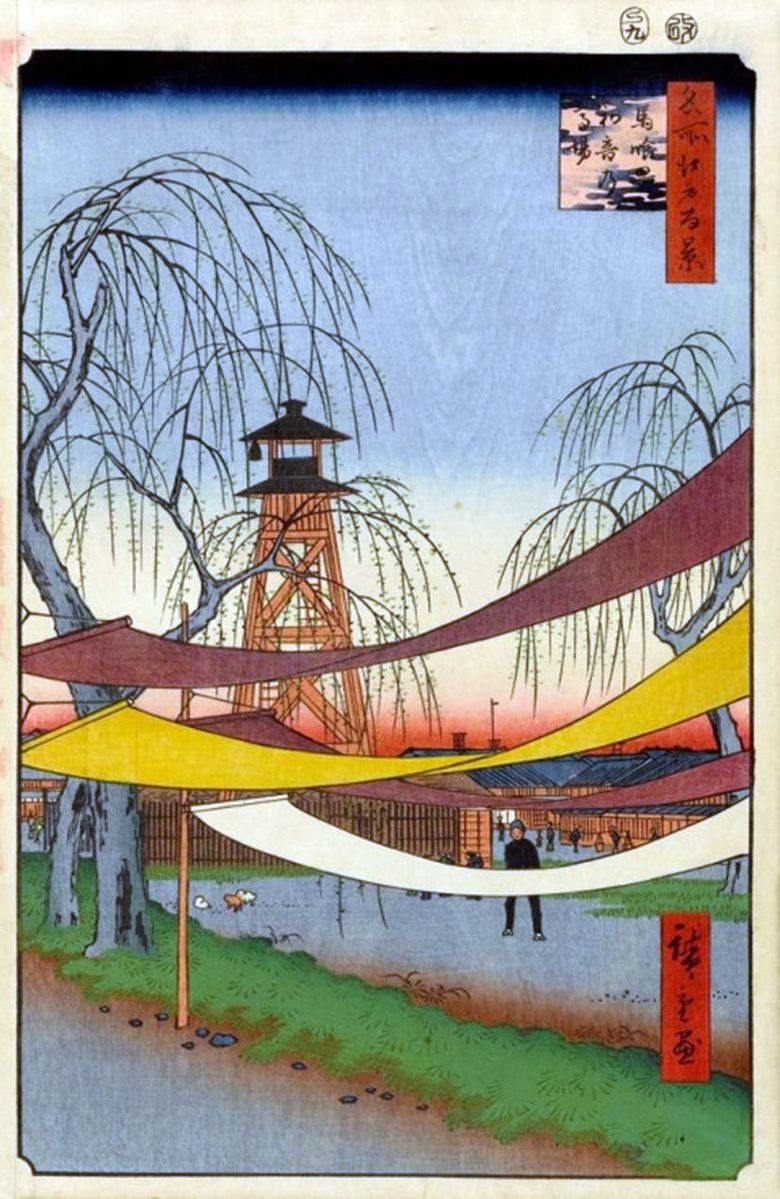 Cercle de course Hatsune No Baba dans le quartier de Bakurote – Utagawa Hiroshige
Cercle de course Hatsune No Baba dans le quartier de Bakurote – Utagawa Hiroshige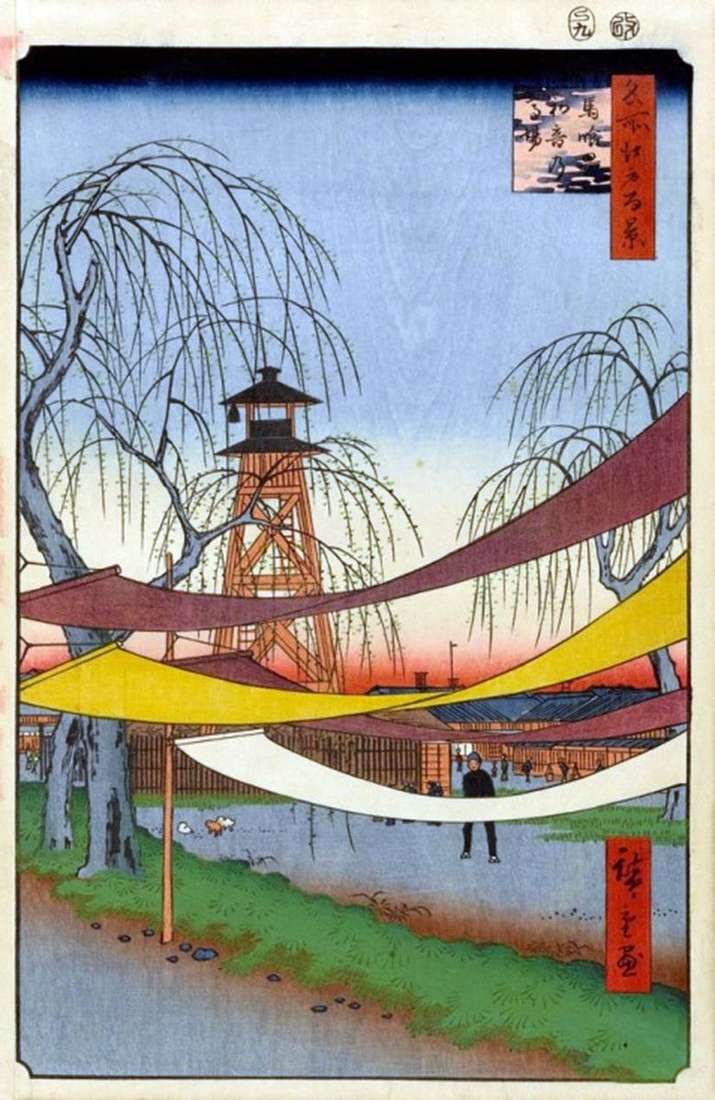 Anillo de carrera Hatsune en el barrio de Bakurote – Utagawa Hiroshige
Anillo de carrera Hatsune en el barrio de Bakurote – Utagawa Hiroshige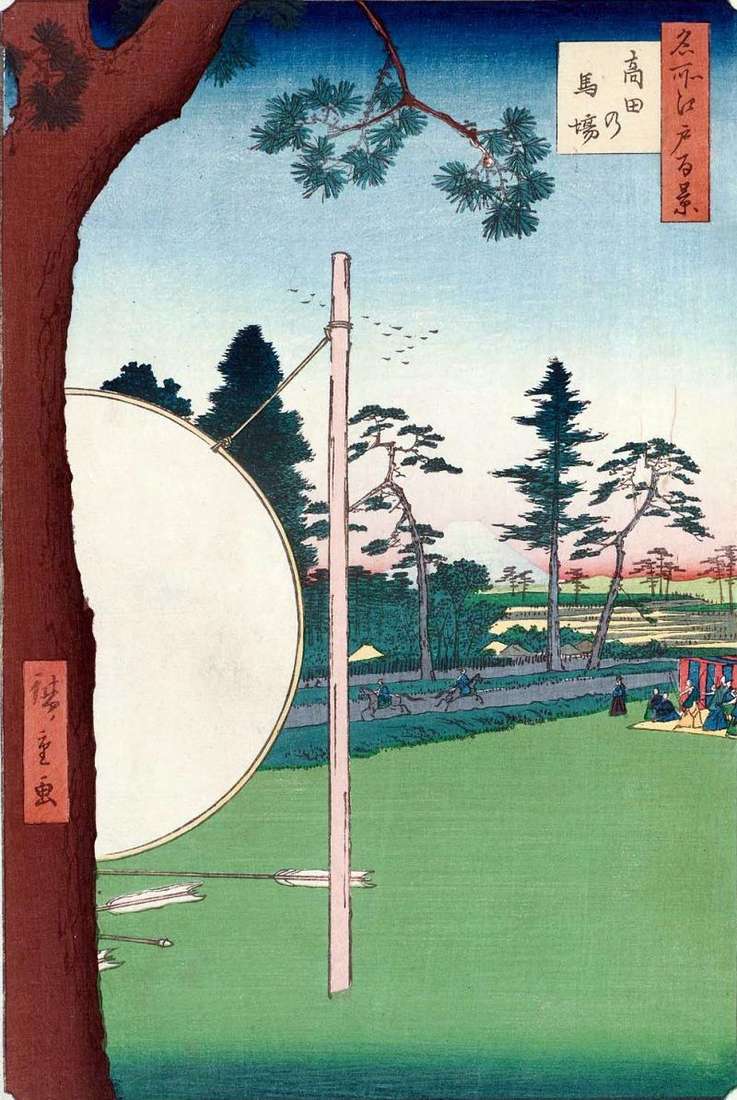 Takala-no woman by a race circle – Utagawa Hiroshige
Takala-no woman by a race circle – Utagawa Hiroshige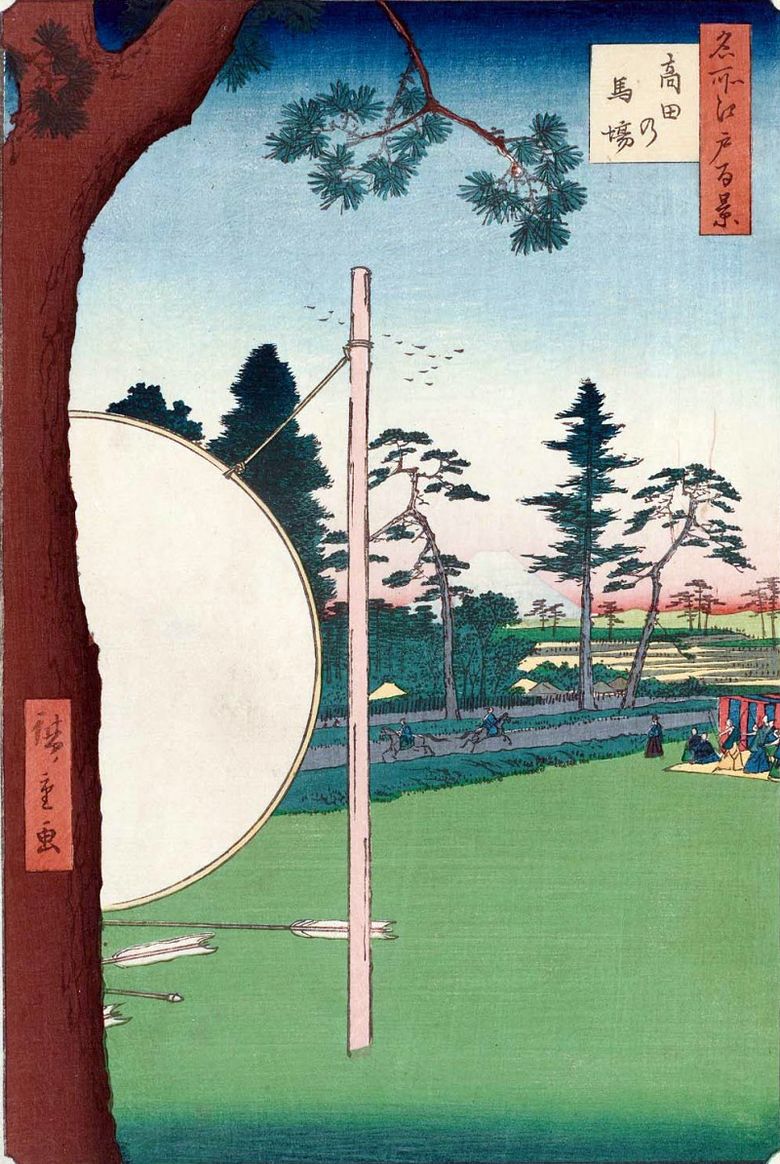 Takala No Baba – Race Circle – Utagawa Hiroshige
Takala No Baba – Race Circle – Utagawa Hiroshige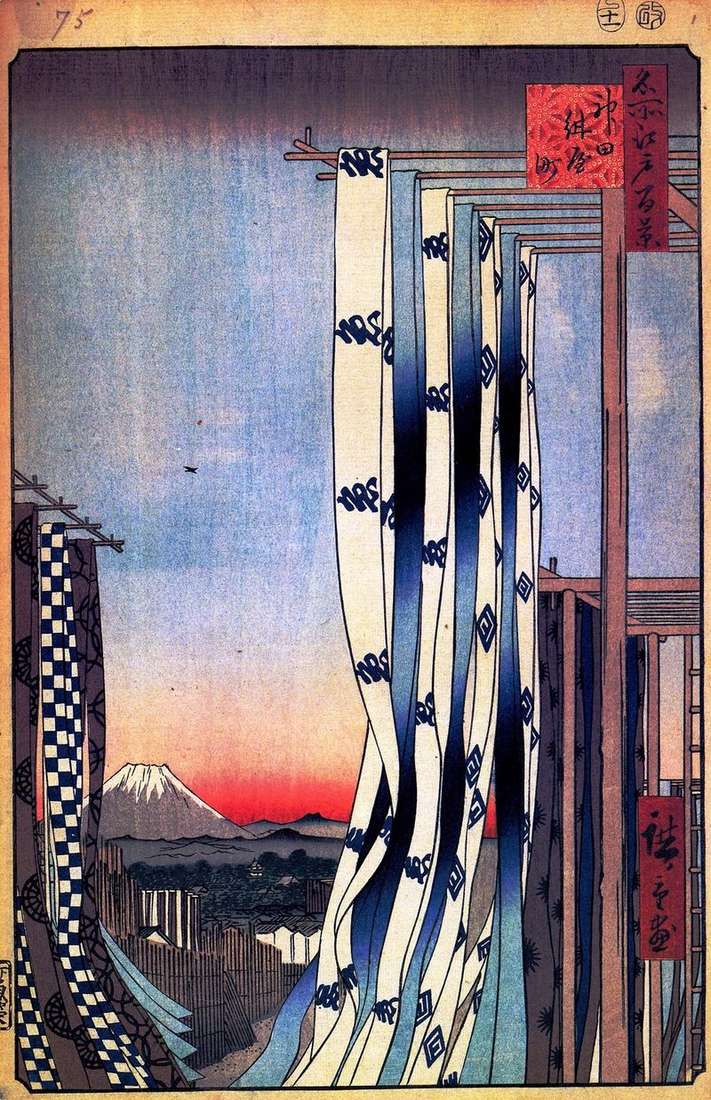 Kanda district, the dyers’ quarter by Utagawa Hiroshige
Kanda district, the dyers’ quarter by Utagawa Hiroshige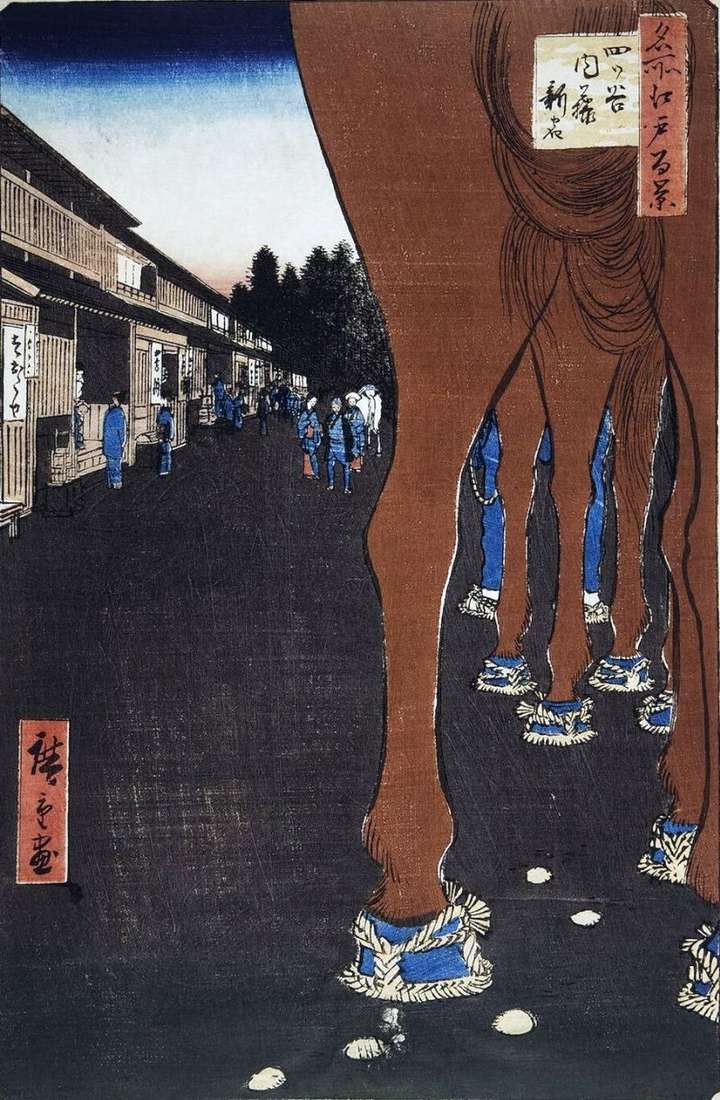 Naito-Shinjuku in Yeatsu by Utagawa Hiroshige
Naito-Shinjuku in Yeatsu by Utagawa Hiroshige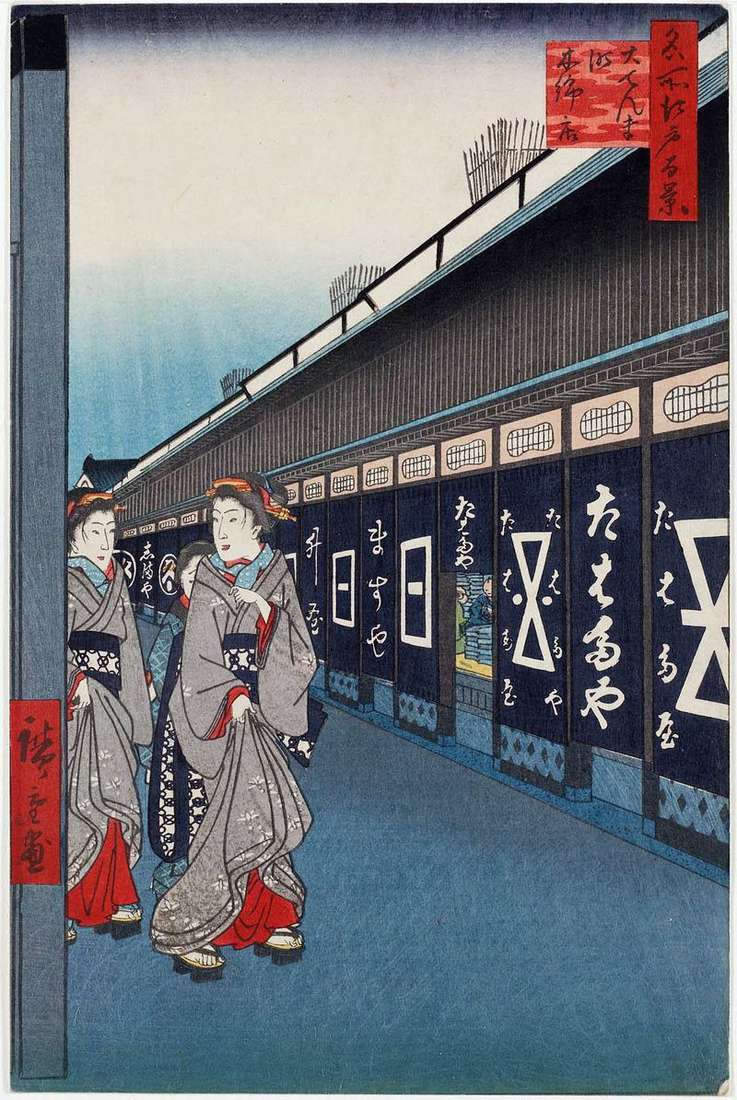 The street of manufactory stores in the Odemmata by Utagawa Hiroshige
The street of manufactory stores in the Odemmata by Utagawa Hiroshige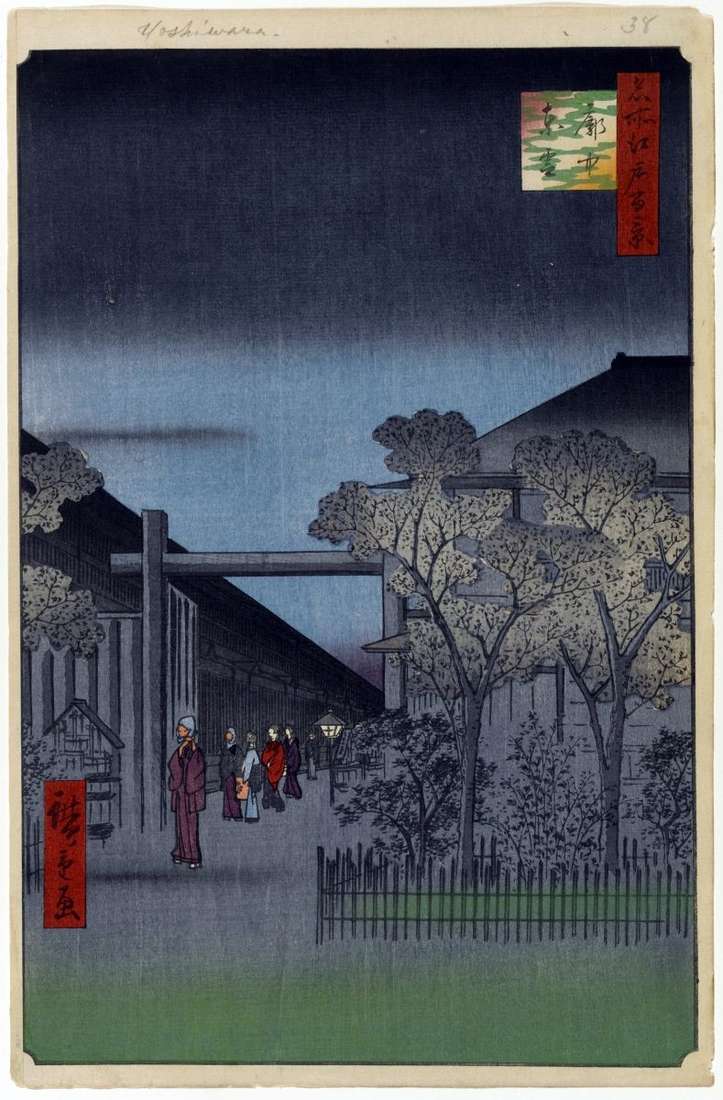 Dawn in the Esivara Quarter by Utagawa Hiroshige
Dawn in the Esivara Quarter by Utagawa Hiroshige